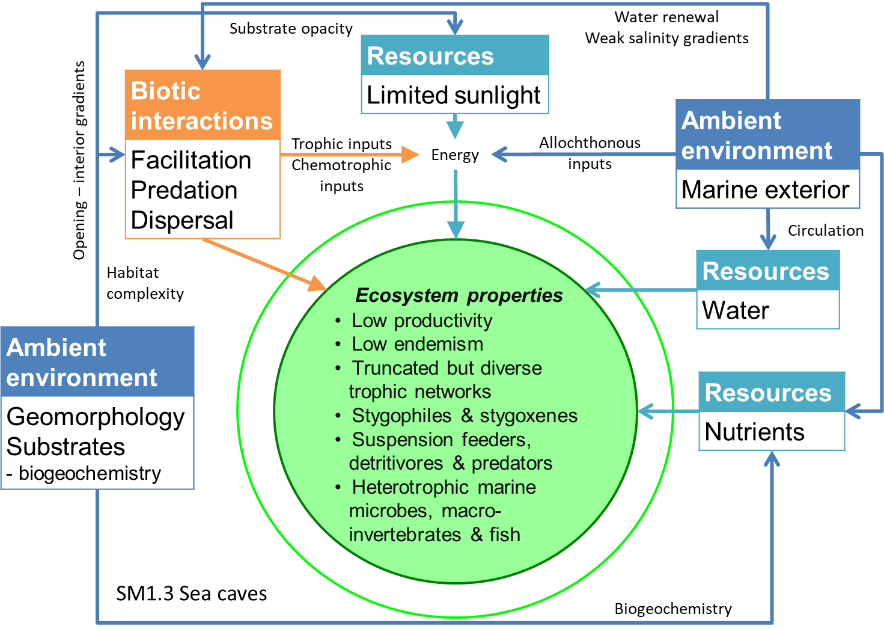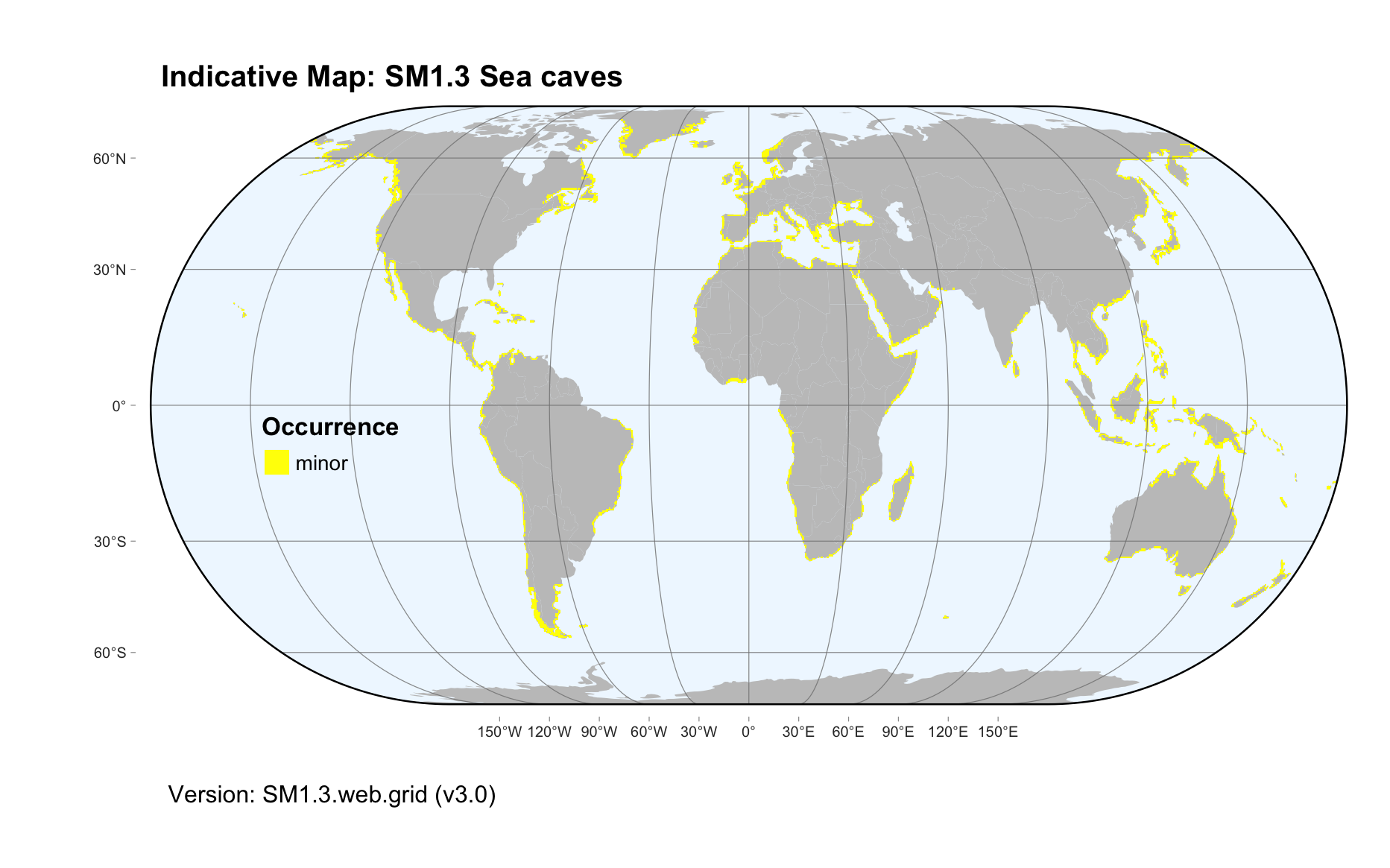Global ecosystem typology
Alternative site for the Global ecosystem typology with additional information for ecosystem profiles and indicative maps.
This site is maintained by jrfep
SM1.3 Sea caves
Biome: SM1. Subterranean tidal biome
Contributors:
(texts)
Sea caves are formed by waves action on fissures in a wide range of rocky coastlines around the world. Unlike anchialine caves, salinity gradients are weak and a strong marine influence is maintained throughout their extent. They support a range of sessile invertebrates (e.g. sponges, cnidarians, bryozoans), mobile invertebrates (e.g. molluscs, crustaceans, annelids,) and fish. Some organisms appear to be exclusive to sea caves, some shelter in sea caves diurnally, and others are itinerant visitors.
Key Features
Wave-exposed caves provide dim light and shelter to cave-exclusive, resident and transient/ migratory invertebrates and fish..
Overview of distribution
Coastal headlands, rocky and coral reefs globally.
Profile versions
- v2.0 (2020-06-17): V Gerovasileiou; TM Iliffe; V Gerovasileiou; B Gonzalez; D Brankovits; A Martínez García; DA Keith
- v2.01 ():
- v2.1 (2022-04-06): TM Iliffe; D Brankovits; V Gerovasileiou; B Gonzalez; A Martínez García; DA Keith Full profile available at official site
Main references
Selected references for this functional group:
Cicogna F, Bianchi CN, Ferrari G, Forti P (2003) Le grotte marine: cinquant’anni di ricerca in Italia Ministero dell’Ambiente e della Tutela del Territorio: Roma
Gerovasileiou V, Martínez A, Álvarez F, Boxshall G, Humphreys W, Jaume D, Becking L, Muricy G, van Hengstum P, Dekeyzer S, Decock W, Vanhoorne B, Vandepitte L, Bailly N, Iliffe T (2016) World Register of marine Cave Species (WoRCS): a new thematic species database for marine and anchialine cave biodiversity Research Ideas and Outcomes 2, e10451
Riedl R (1966) Biologie der Meereshöhlen Paul Parey: Hamburg
Gerovasileiou V, Bianchi CN (2019) Mediterranean marine caves: a synthesis of current knowledge MedKeyHabitats II Project (UNEP-MAP, SPA/RAC: Tunis
Diagrammatic assembly model

Maps
Maps are indicative of global distribution patterns are not intended to represent fine-scale patterns. The maps show areas of the world containing major (coloured red) or minor occurrences (coloured yellow) of each ecosystem functional group. See general notes on maps.
There are 2 alternative versions of the indicative map for this functional group, please compare description and sources below.
SM1.3.IM.grid_v3.0
Datasets
- MEOW-2008
Map references
Spalding MD, Fox HE, Allen GR, Davidson N, Ferdaña ZA, Finlayson M, Halpern BS, Jorge MA, Lombana A, Lourie SA, Martin KD, McManus E, Molnar J, Recchia CA, Robertson J (2007) Marine ecoregions of the world: a bioregionalization of coastal and shelf areas. Bioscience 57: 573–583. DOI:10.1641/B570707
SM1.3.web.grid_v3.0

Datasets
- MEOW-2008
Map references
Spalding MD, Fox HE, Allen GR, Davidson N, Ferdaña ZA, Finlayson M, Halpern BS, Jorge MA, Lombana A, Lourie SA, Martin KD, McManus E, Molnar J, Recchia CA, Robertson J (2007) Marine ecoregions of the world: a bioregionalization of coastal and shelf areas. Bioscience 57: 573–583. DOI:10.1641/B570707
Check: the Glossary / Profile structure / the public document